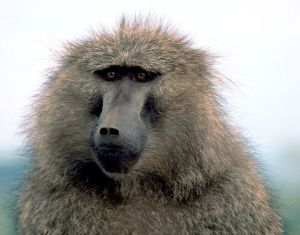
I got 500 friends on Facebook
A lot of bloggers are picking up my piece in today’s issue of The Economist on the possible bio-sociological conclusions to be drawn from Facebook data. A few examples are here, here, here, here and here.
The point of the piece: to add a tiny bit to the research debates about human group size.
Just a few words on the backstory of this article: I got the idea in December while chatting to Sheryl Sandberg, the COO (“chief operating officer”) of Facebook. We were just shooting the breeze when I thought of the Dunbar Number, one of my favorite talking points, and a conceit that I’ve used before. Robin Dunbar, an anthropologist, hypothesized that primates form groups to the extent that their brains can compute the many relationships among group members. I think what I like about it is the originality of extrapolating from the ratio of neocortex size to group size among other primates to Homo Sapiens.
Anyway, we all went off over the holidays, and when we came back from the break, Larry Yu at Facebook put me in touch with Cameron Marlow. He had got some complicated PhD title that amounted to, in his words, “computational sociology” and is now the “in-house sociologist” at Facebook. (Since Mr Crotchety and I think alike–great minds?–he serendipitously emailed me an article about the rise of computational social scientists that same week. If you don’t know Mr Crotchety, you haven’t been reading The Hannibal Blog enough.)
What I wanted from Facebook was numbers that might advance the debate on human group size. It was really difficult. Marlow and his team came back with one set of charts that I could not decipher without help. “Simpler“, I said, which will not surprise regular readers. Eventually, they produced a chart that I thought was simple enough.
Here it is: economist-median-network-size (Incomprehensibly, WordPress does not allow me to embed an PDF chart into my blog, so please click through.)
I like it. It shows three diverging lines: the blue for the number of people we track passively (by clicking on their profiles or status updates, say); the green for the number of people to whom we respond (by commenting on a status update, say) but who don’t respond back; and the red for the number of people with whom we communicate two-way (by chatting, emailing, exchanging wall posts, etc).
The conclusion: the more active or intimate the network, the smaller and more stable, no matter how many “friends” you have on Facebook. I wrote my piece around that chart.
To my surprise, my editor then took an extreme interest in gender differences. So I went back to Facebook and had Marlow produce another chart, this one: active-relationship-size-by-gender
It was still simple, but broke out the same information by gender. Yes, just as you thought, women are more social than men.
To my surprise, the editor didn’t go with any of the charts. What can you do? So I went back to Facebook to get actual numbers. (It was like getting blood out of a stone at this point.) And so we ended up putting those numbers in the text.
Long story short, the piece has no chart but it still gets the point across: No matter what technology you use, we still seem to interact with the same small number of people as ever before. Hence the rubric (subtitle):
Even online, the neocortex is the limit
Anyway, if you’re interested look at the charts and see if that gives you more ideas.

